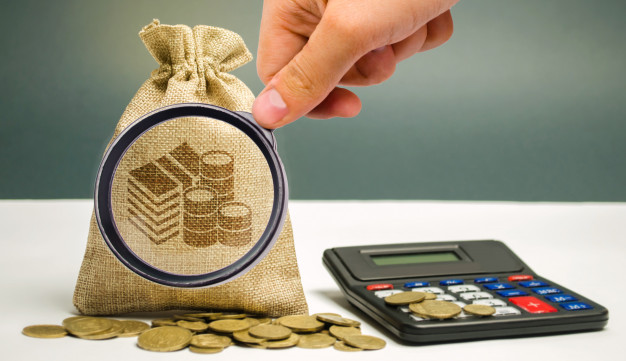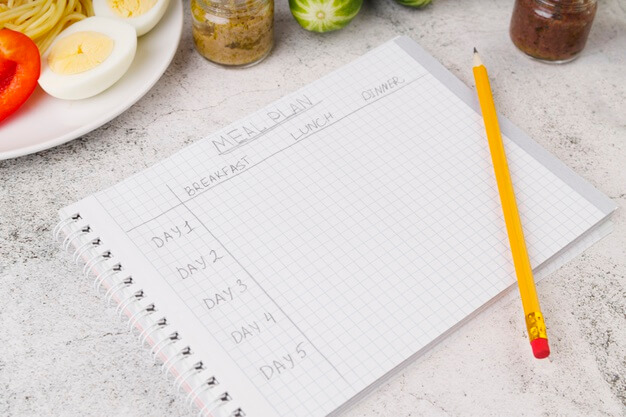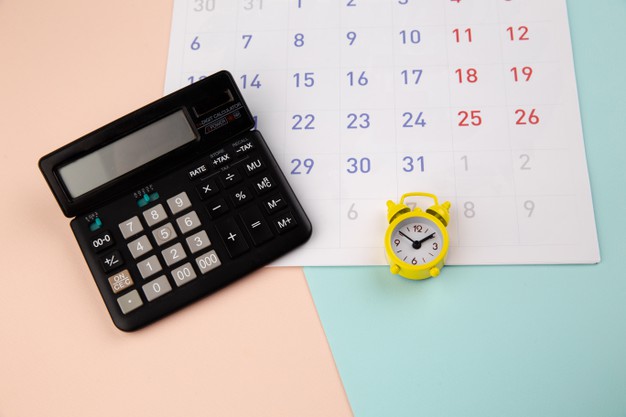
Full Proof Plan: Surviving Financially as a Single Mom
As a single mother, it sometimes seems impossible to get financially secure on your own. The good news is that when you are truly deliberate about your finances, you can get them in order and maybe get ahead with your bills. Some of the steps that you can take for this includes:
Know Your Budget
The first thing you need to do before trying out any of the other steps on this list is sit down and figure out your budget. It is impossible to be financially secure without having a good idea of your budget.

You need to know how much money is coming in and how much is going out before you can make any big decisions with your money. Some of the steps that you need to take to get your budget in order include:
Step 1: Look at Your Income
Figure out how much income you have a month. You need to write down a number so you have it on hand. Write down all sources of income.
This will include what you make from your job, any payments you get from rental properties or investments, any side hustles you have. If you get some child support from the other parent, you should include this in your calculations as well.
Get out a piece of paper and write this income down. Add up the amount that you have and write that income number on the top of the paper.
This is the income you will base the rest of the budget on as we go through the process. You may need to find ways to make that number bigger later.
Step 2: Write Down Your Bills
With that income number at the top of the paper, it is time to go through and write down your bills. Write down everything that you must pay for the month.
Think about your utilities, debts, house payment, monthly expenses, food, and everything else. Under the income part on the same piece of paper, you can write down each bill in its own line with a description so you remember later on.
Step 3: Look Over Bank Statements
The number above is going to provide you with the amount you have to pay each month. Now we need to look at the bank statements to learn what you spend the rest of your money on.
Take out three to six months of bank statements and highlight everything that you spent money on that was not included in your regular bills earlier. Add them up and average them out, write that number down as well as a monthly total.
You can then subtract the total amount you spend in a month from your income. If you have some leftover when you are done, that is a good sign.
It means that you are managing your money well and may come out ahead in the process. It is also a sign that you are able to start your emergency fund. While there may still be some places to cut, having a surplus this early is good.
However, many find that they spend more than they make. This is why you may have credit card debts and your paycheck does not seem to stretch far enough.
If you do the calculations and. You spend every penny, and sometimes more, that you make, it may be time to make some changes. You can’t continue on this way forever or you will never get out of debt.
Step 4: See Where Cuts Can Be made
If you do not have any money left over at the end of the month or you find that you need to rely on your credit cards, it is time to make cuts.
First, look at all the extras that you highlighted in the last step. Are there some things that you could cut? If you go for coffee every morning or eat out five times a week, a simple solution is to limit how often you do that.
With the high price of feeding a family while out to eat, you can save $100 or more a month cutting it in half.
Try to cut out as many of those as possible and then come back to do the calculations. Does that help to free up some money? Would it give you a little extra cushion to make you more comfortable?
You can also look at some of the bills. If your kids are in five activities each that cost a lot of money, it may be time for you to tell them to pick a few they are most passionate about and stick with that. See if you can cut down on some necessary expenses, like your groceries as well.
Step 5: Create a Budget and Stick with It
When you have gotten your finances under control, it is time to create a budget. Write down what you will spend in each category for the next month and then try to stick with it. You can watch this for a few months and see how it goes.
When you stick with a budget, you may find that a few categories need more money and others can work with less. As long as you are active with your money and use caution with all purchases, you can make adjustments until you get it right.
Step 6: Consider How to Increase Your Income
If you have tried to cut out a lot of things and your bills are still higher than your income, or you aren’t able to pay off anything or do an emergency fund, then it is time to look at other ways to increase your income. A side job may be the best way to help you get started making a little bit extra.
Set Up an Emergency Fund
As a single mother, it is important to set up an emergency fund. This will give you a little peace of mind knowing that you can handle unexpected expenses that may come up with your children.

A small emergency is fine, as long as you have something. Start by adding $5 or $10 to it a week and work up from there. To start an emergency fund:
Step 1: Look At Your Budget
That budget we worked on earlier is going to come in handy at this point. You can go look back to it and see where you have some free money that can go to an emergency fund.
Without a budget, it is impossible to know where your money goes and how much you have leftover at the end of the day. If you have not done your budget yet, start here before working on your emergency fund.
Step 2: See How Much You Can Save
When you look at your budget, you should have a good idea of how much, if any, money is left over after you pay for your bills and decide to pay off some of the debt that you owe, then it needs to go into the emergency fund.
It is easy to feel that you should just forget about the emergency fund when you are short on money or only have a few dollars to put in. However, every little bit counts so even if you only have $50 or less at the end of the month, add it in.
Step 3: Make Cuts to Put More In Fund
Make as many cuts to the budget that you can, without going crazy, to help add money into the account. It is best to get about $1000 into the emergency fund if possible, even if that takes time.
However, the faster you can put money into that emergency fund, the more secure your finances will be. See if there are a few things that you can cut and then put the money you would normally put towards those things into the emergency fund.
Step 4: Do Not Touch Fund Unless Necessary
Once you start creating your emergency fund, it is important for you to not touch that money until an actual emergency happens. It may be tempting to look at the account and see there is money sitting there.
And then you may find something you really want to spend the money on and think it won’t hurt to take some of the money out of there. But all the money that goes into your emergency fund needs to stay there.
While it is easy to spend money that goes into the emergency fund, this can put you at risk. Soon you will spend all of the money and may need to go into debt, or run into a lot worse trouble, because you do not have any money for a car repair or any other emergency. Start the emergency fund and then leave that money alone until an emergency happens.
Plan Out Your Meals
It is time to get into the trend of meal planning. This is a great way to save cash because it allows you to buy in bulk and keeps you away from the drive-thru. It is a great way to stick with a budget and limit how much you purchase each month.

It is also the best way to get the most out of your meals by doubling up and freezing or using leftovers. To help you get started with meal planning:
Step 1: Set Your Weekly Budget
It is hard to make a meal plan for a whole month. You may be able to do a few weeks at a time, but going further ahead can risk food going bad and can lead you to problems with not having fresh food for most of the month.
Decide how far in advance you want to meal plan and then write down the budget you can’t go over.

Step 2: Search for Recipes
Before you can make a meal plan, it is time to pick out the recipes that you want to use. You can search online, use some of your old favorites, look through cookbooks, and ask family and friends.
Try to add some variety into your schedule to make sure you can make tasty and budget friendly meals that your family will love.
Step 3: Write Down When You Will Have Each Meal
Finding recipes can be the fun part; now it is time to figure out when you will have each meal. Get out a calendar or even use a dry erase board and write down what you will have for breakfast, lunch, dinner, and snacks each day of the week.
This may seem like a lot of work, but the more you can plan ahead, the easier it is for you to save money on your food budget.
Step 4: Write Your Grocery List
After you have a good idea of what recipes you would like to use, it is time to create your grocery list. Write down the ingredients you will need for each meal, along with anything extra you may need to get through the week.
This may include additional snacks, fruits and vegetables, or household products you will use.
Step 5: Shop and Stick with the List
If you go to the store, you need to stick with your list. Do not go off the list, no matter how tempting that may be. Eat something ahead of time to reduce impulse purchases.
If you struggle with sticking to your list, and therefore your budget, consider doing one of the pick-up options that are popular. This keeps your eye from wandering and lets you see the exact total of the food before checking out.
Step 6: Meal Prep to Make Things Easier
Depending on the types of meals you decide to make, you may consider meal prepping to get things ready. You can prepare a few of the meals ahead of time, or at least slice and dice some of the vegetables so putting the meals together later is a little bit easier.
Visit the Thrift Stores
When you need anything, it is time to visit the thrift stores. It is amazing how many items they have there that will suit your needs at a fraction of the cost. This is the first place you should look when your kids need new clothes and shoes.

They may complain a little at not getting name brand items, but for how quickly they grow out of everything, you will love the prices. To do this:
Step 1: Figure Out Where the Thrift Stores Are
If you have not frequented thrift stores in the past, it is time to get familiar with where they are located in your town.
Find one that is near you and seems to have good reviews. You may need to show around at a few to learn where the best options are and to pick your new favorite one.
Step 2: Comparison Shop Ahead of Time
While most things will be less expensive when you go to a thrift store, it is a good idea to compare prices and not for sure ahead of time. There are times when it is cheaper to get an item brand new from another store, rather than getting it used from the thrift store.
Research a little to see what the regular price of an item is and then hit the thrift store to see if you can get a good deal on it.
Step 3: Go In with a Set Amount of Money
A good way to make sure that you stick with your budget and do not spend too much when you walk in is to have a set amount of money you are allowed to spend.
If you can do this with cash, even better. This helps you stay on track and makes it harder to overspend while there.
Step 4: Do Not Get Distracted
There are a lot of neat things to see when you go into a thrift store. Your goal should be to avoid distractions as much as possible. Just like with grocery shopping, make a list of what you need and head right to those areas.
If you look around too long, you are likely to see items that pique your interest, but you just do not need. It is easy to throw things into your cart you do not need, making your final total too high and ruining your budget.
Plan Ahead
It is hard to plan for everything, but the more you can plan ahead for some of the big occasions that may come up, the better your finances will be.
Preparing for back to school, Christmas, birthdays and other big occasions is a great way to not get caught off guard when these things pop up.

Step 1: Remember the Holidays
The holidays come around each year and should not be a surprise. But it is easy to forget about them when you are trying to do a budget. Then it becomes a big emergency to try and come up with money for these big expenses. You need to figure these into your budget ahead of time and plan as much as possible.
When you start planning for these holidays and special occasions ahead of time, it is easier for you to shop around and find good deals, which will save a lot of money.
You can also go through and set up an account that you add some extra money to each month to help you prepare for these big expenses.
Step 2: Back to School Time
Every year before the back to school time, start getting prepared. Your kids will most likely need new clothes, new shoes, school supplies, and other items to go back.
This can be expensive for each child and you may need to do it for several children. Plan ahead with your budget so you have money around to help out with these back to school expenses.
Step 3: Prepare for Emergencies
This is where that emergency fund comes into play. If you are able to start it early, you may have enough to cover most, if not all, of a car repair or medical bill that comes up for you or the kids. Always prepare for the worst and hope for the best.
Pay off Debts
If you want more control over your money, you need to look at paying your debts off. This can seem almost impossible as a single mother who is trying to get ahead.

Remember that this does not have to happen overnight. Paying off the minimum amounts, with a little extra a month if possible, without adding more debt will get you there with time. To help pay off your debts:
Step 1: Know What Your Debts Are
It is impossible to make any plan with your debts if you have no idea what they are or how much you owe on all of them. It may be a little painful to see the final amount.
But this is the only way to help you get started on your debt repayment plan.
Step 2: Figure Out the Minimum Payment
Before you can work on getting ahead with your debts, you need to know your minimum payment. This is the amount you have to pay no matter what. Write down the number of this payment for each debt so you know where you are.
Your goal is to pay more than this minimum and get your debts paid down a little faster, but if you have a bad month for some reason, it is good to know that minimum amount.
Step 3: Look At Your Budget to Figure Out If There is Any Extra
Even if it is just a few dollars a month, every little bit can help. If you can squeeze a tiny bit more out of your budget to keep interest low and to shave time off how long you owe on a debt, you can get those debts done faster.
Step 4: Pick Payment Option
There are different repayment options that you can choose. The Debt Avalanche and the Debt Snowball are two of the most popular options. The first has you pay off your debt with the highest interest first and the second has you pay off the smallest debt first.
You will use any extra money you have each month to pay towards that debt. When done with the first debt, roll that payment, and any extra, over to the next debt and so on until it is all gone.
Step 5: See if You Can Negotiate
In some situations, the debt holders may be willing to negotiate with you. It never hurts to ask. You may be able to get the interest rate reduced, some of the principal kicked off and even the debt erased depending on how old it is.
Spending a little bit of time on the phone can reduce your financial burden and give you more room in your budget.
Conclusion
Figuring out your finances as a single mother may be hard. Whether you get financial support from the other parent or not, your income is often slashed and you need to figure out how to get by on a lot less than normal.
Following these tips and steps can help you stretch your budget a little further and may make it possible to feel more secure.




